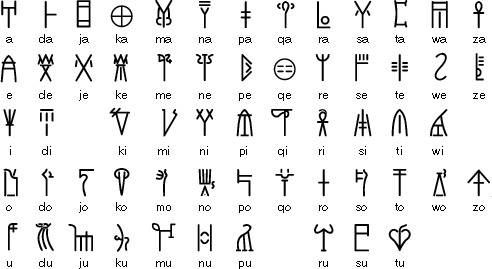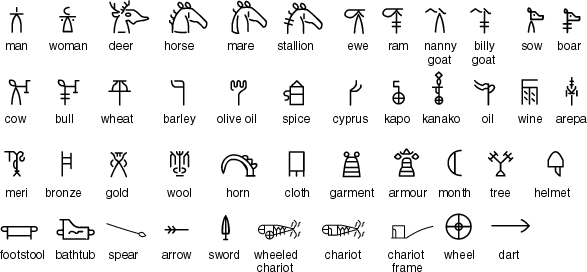Roma couple to face magistrate as search for 'Maria's' parents intensifies
The Roma couple who falsely claimed to be the parents of a 4-year-old child found at a gypsy camp in central Greece are due to face a magistrate on Monday as the international search for the child’s real mother and father continues.
Charges of kidnapping and obtaining a false birth certificate will be issued against the Roma couple, who claim that they adopted the baby when it was abandoned by its foreign parents. Police are to publish the photos of the man and woman in the hope that it helps with their inquiries to locate the parents of the girl, who has been nicknamed Maria.
Greek authorities have contacted Interpol to help with the search and the children’s organization The Smile of the Child, which is looking after the girl, has received thousands of calls from Greece and abroad regarding Maria.
"[Her] reaction was immediate terror: She was terrified because she doesn't know where she goes. She was crying and opposing to go wherever,» said Costas Yiannopoulos, the charity’s director.
"As soon as she went to the hospital and had a nice bath, and then the next morning our people looked after her. She immediately changed."
Police are also extending their searches to hospitals and registry offices to seek information that may point to systematic child trafficking.
The girl was found during a raid on a Roma camp in Farsala last week. Authorities noticed that Maria did not look like her supposed parents and a subsequent DNA test proved that there was no match.
Authorities suspect the pair were involved in human trafficking as records show them having a total of 14 children, registered in three different parts of Greece. However, speaking to Skai TV late on Friday, the couple’s lawyer, Marietta Palavra, said that the pair decided to take on the child after feeling sorry for her. She alleged that the girl’s biological mother, a foreign national, wanted to “get rid” of her child.
In response to questions about why the couple had registered so many children, the lawyer claimed it was a way of maximizing the state benefits they could receive.
The case has received international attention and a spokesman for the parents of Madeleine McCann, a British girl who went missing in Portugal in 2007, said the child’s discovery had given them “great hope” their daughter would be found alive.
The family of Ben Needham, a 21-month-old British toddler who was abducted from his grandparents’ home on the island of Kos in 1991, have call for further DNA tests as they continue to search for their missing loved one.
“Obviously, it's been a strong belief of myself and all my family that Ben was taken by gypsies for child trafficking or illegal adoptions and this case just shows that they can be found,” said Ben’s sister, Leighanna.
“I think that would be a brilliant thing to get our DNA out there, even if it's not actually Ben but any siblings or any children maybe of Ben (that are found) then that could hopefully lead us to him.”
Kerry Needham, Ben’s mother, called for the investigation into her son’s disappearance to be reopened. “We have always believed that Ben's abduction was gypsy-related and have had a long ongoing inquiry in Larissa,” she told ITV. “We hope that the investigation into Ben's disappearance will now be looked at again.”
Meanwhile, the Roma community in Greece fears that they will be stigmatized by the case of Maria. «We know these cases exist, but they involve Bulgarians, not Greeks like us. There are no transactions involving children here,» the president of the Roma community in Farsala, Babis Dimitriou, told the Associated Press, adding that the 40-year-old woman, who had registered Maria as her own child, «cared for her even better than for her own children."
Please help if you can.
My prayers for all those families who have had their children taken from them.
And talking about help, these people could do with your help too, poor souls, sometimes I think life deals out a very bad hand.
Immigrants’ interest in repatriations growing fast
Almost 2,000 migrants in Greece have applied for voluntary repatriation since the beginning of July, largely due to joblessness.
The Greek branch of the International Organization for Migration (IOM) said 15,481 people have taken advantage of the European Union-funded program since it started in 2010. Whereas applications mostly came from Africans and Asians, Eastern Europeans are also showing interest now.
Since the summer, 832 Pakistanis, 361 Bangladeshis and 142 Georgians have been among those who have chosen to return home. “The people who ask to leave Greece face huge problems,” said Daniel Esdras, the head of IOM in Greece. “Nine in 10 are homeless and have to look for food every day. They have realized they are in a tragic situation, a dead end.”
Esdras said interest in the program from migrants at reception centers has also risen. Last year, they only made up 5 percent of those seeking to leave. That figure has grown to 18 percent.
Love and prayers for the homeless, and for all those who are in a position to help, give food, clothing, and to show these people that someone cares.
And on a brighter note...
It's not your typical wedding reception venue, but the warm glow of the petrol pumps, the sturdy dance floor and the soft breeze from the Gulf of Corinth beat a soggy marquee in Surrey hands down. And the view is tremendous: you can just see the spectacular Rio-Antirrio bridge, which links the Peloponnese to the Greek mainland, illuminated in the background.
The groom, Christos, had to hold the reception at his own petrol station to save money.
Well done for Christos and his family. Just because we have less, we can still be happy! And I'm talking from experience here. Happiness is in the mind, not in the pocket. Of course, that doesn't stop us wanting as much out of life as we can get. But we do have to live the moment with as much happiness as we can muster. I'm smiling, are you?
Great, have a wonderfully happy day,
Love and hugs,
Jane x
| 










.jpg)



 The archaeologist and I walk downhill to the shelter. Nikos Stampolidis knows every rock and tree here like the back of his hand. After all, it was one of the first digs he ever participated in and he was not yet 30 years old when he started.
The archaeologist and I walk downhill to the shelter. Nikos Stampolidis knows every rock and tree here like the back of his hand. After all, it was one of the first digs he ever participated in and he was not yet 30 years old when he started.

